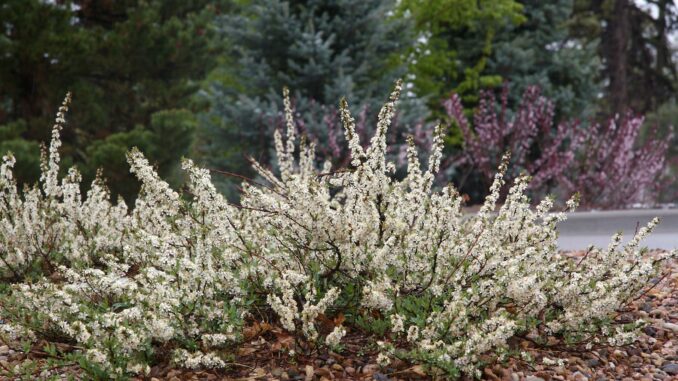

Indigo Deany | Fort Collins Nursery
When we plant something in our garden, many of us— sometimes without realizing— expect something in return. Maybe you’ll relate: the satisfaction of the physical exertion of digging a hole or preparing a bed; the promise of something beautiful emerging in a few months’ time; the feeling of contributing to the vitality of an overlooked, buzzing, crawling world. Maybe it’s the feeling of putting a bit of ourselves into matter that will outlast us, and the comfort of experiencing that promise of renewal here and now. Most likely, there’s a bit of each of these expectations in our gardening.
The tradeoff for such high expectations, many of us know (or fear, or love), is hard work with our own hands. But there is perhaps no greater delight for the gardener than the plant that performs year after year with ease. Those plants are our true champions. Below are some examples of plants that— no matter who you are or your experience— are easy to grow in our region.
Switchgrass, or Panicum virgatum, has a deep root system that allows it to thrive in tough, low-nutrient soils. Once it’s established, it can tolerate periods of drought and heat-blasted, full sun exposure. Its dense form, topped with airy seedheads, provides year-round magic. Just give it weekly water throughout the summer (monthly during a dry winter) and cut it back annually in early spring. “Shenandoah” turns brilliant burgundy in autumn, while “Heavy Metal” has unusual, cool blue foliage that turns golden-yellow in autumn.
Desert (or Colorado) Four O’clock is a stunning perennial that is unrivaled for ease once established. After the first year of being planted, it requires almost no extra water— even during drought— due to its remarkably long taproot. Give it a drink once a month during the driest spells. Mirabilis multiflora will be covered in magenta flowers all season long, and requires no deadheading to keep it blooming. It prefers low-nutrient soils, so little amendment is necessary when planting. Come wintertime, the plant parts above ground will dry out and turn brown; just snip the main stem above the soil line and the new growth will emerge from the taproot in spring.
Pawnee Buttes Sand Cherry, or Prunus besseyi, is a low-growing workhorse of a shrub that asks for almost nothing in return for stellar performance. In the springtime, it is covered in fragrant white blossoms that give way to light green foliage reminiscent of olive leaves. In autumn, the foliage turns a vibrant red before dropping for the winter. These shrubs don’t care what soil you put them in— low-nutrient, dry, sloping— their hardy roots will dig in and hold on. Once established, it requires supplemental water only during dry spells.
Get sweaty, sink your hands into dirt, dig and watch and fret. The garden wants our bodies and our hearts; relish the hard work. But also: trust that some plants want to work hard for you, too, without asking for much in return. Beauty can indeed be best friends with ease.
Support Northern Colorado Journalism
Show your support for North Forty News by helping us produce more content. It's a kind and simple gesture that will help us continue to bring more content to you.
BONUS - Donors get a link in their receipt to sign up for our once-per-week instant text messaging alert. Get your e-copy of North Forty News the moment it is released!
Click to Donate
